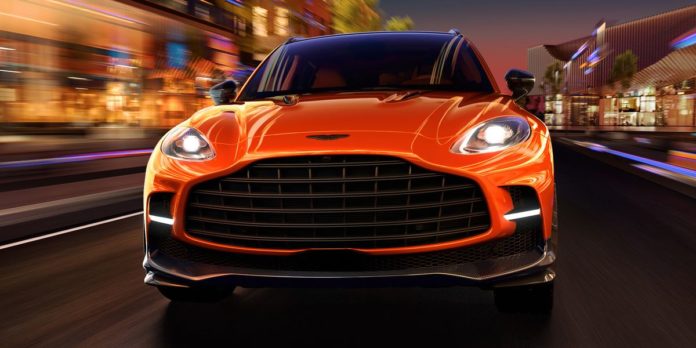- The 2025 Aston Martin DBX receives a redesigned interior and improved UI, which were two of the biggest things previous customers complained about.
- Aston is also dropping the 542-hp twin-turbo 4.0-liter V-8, meaning the sole model is the 697-hp DBX 707.
- Not only is almost every part of the DBX’s cabin changed, but it adds Aston’s new infotainment system that was developed in-house and is already seen in the DB12
Mid-cycle facelifts normally feature either obvious design changes or powertrain upgrades. Aston Martin is taking a different path with the revised DBX 707. External design is effectively unaltered, as are its V-8 powertrain and suspension hardware. Instead, the big change is an almost all-new cabin.
Fixing the Problems
The reason for this goes right to the top of the company. Aston executive chairman Lawrence Stroll says that the cabin architecture and outdated user interface of the DBX were the most common cause of complaint among owners, most of who loved pretty much everything else about the luxury SUV. Which is why he ordered the DBX be given both a redesigned interior and also Aston Martin’s new infotainment system, developed in-house and already seen in the DB12.
Aston has also confirmed that both the regular DBX, with a 542-hp twin-turbo 4.0-liter V-8, and the hybridized six-cylinder version that was offered in some parts of the world (but not the U.S.) have been dropped from the lineup. That means the high-performance DBX 707 remains the only available version for the 2025 model year.
While the outgoing DBX’s cabin was never short on character, it did lack ergonomic coherence. In the pre-facelift DBX 707, it featured the strange combination of haptic climate controls, non-haptic drive-mode switches squeezed onto the center console, and gear selection through a row of buttons at the top of the dashboard. It also featured one of the last infotainment systems in the luxury sector not to offer touch-sensitive control, this running a reskinned version of Mercedes’s previous generation UI system that needed to be navigated through a turn-and-click rotary controller.
Pretty much every part of the interior has changed with the new car, with restyled door cards, a revised dashboard, and a much more intuitive control layout. The DBX 707 now has a center console very similar to the one in the DB12 and the forthcoming Vantage, this housing a compact gearshifter with physical controls for drive modes and HVAC functions.
Above this console sits a high-resolution 10.2-inch touchscreen running the company’s own Linux-based Aston UX system. The steering wheel has been redesigned with a smaller and more elegant central cap. Connectivity is also improved with support for wireless Apple CarPlay and Android Auto, plus two USB-C ports between the driver and front-seat passenger. An 800-watt, 14-speaker audio system is now standard, and there’s an optional 1600-watt, 23-speaker Bowers & Wilkins setup too.
Same Basic Body, Same 697-HP Engine
Exterior changes are minimal. The ’25 DBX 707 offers five new paint finishes and also features different door mirrors to accommodate cameras for a 3-D parking display system. The external door handles are also now described as “self presenting,” motoring outwards when the car is unlocked.
Mechanically, the Aston Martin DBX 707 is unaltered for 2025, with power still coming from a 697-hp twin-turbo 4.0-liter V-8 that feeds all four wheels through a nine-speed automatic transmission, both supplied by Mercedes’s AMG subsidiary. Carbon-ceramic brakes, a torque-splitting rear differential, and a 48-volt anti-roll system remain standard. While the hardware remains unchanged, Aston promises that the air springs and adaptive dampers have been treated to new calibration to “increase transient body control.”
We will have to wait for prices, with Aston saying revised DBX 707 deliveries will start in the second quarter of this year. In other words soon.
Our man on the other side of the pond, Mike Duff lives in Britain but reports from across Europe, sometimes beyond. He has previously held staff roles on U.K. titles including CAR, Autocar, and evo, but his own automotive tastes tend toward the Germanic: he owns both a troublesome 987-generation Porsche Cayman S and a Mercedes 190E 2.5-16.

